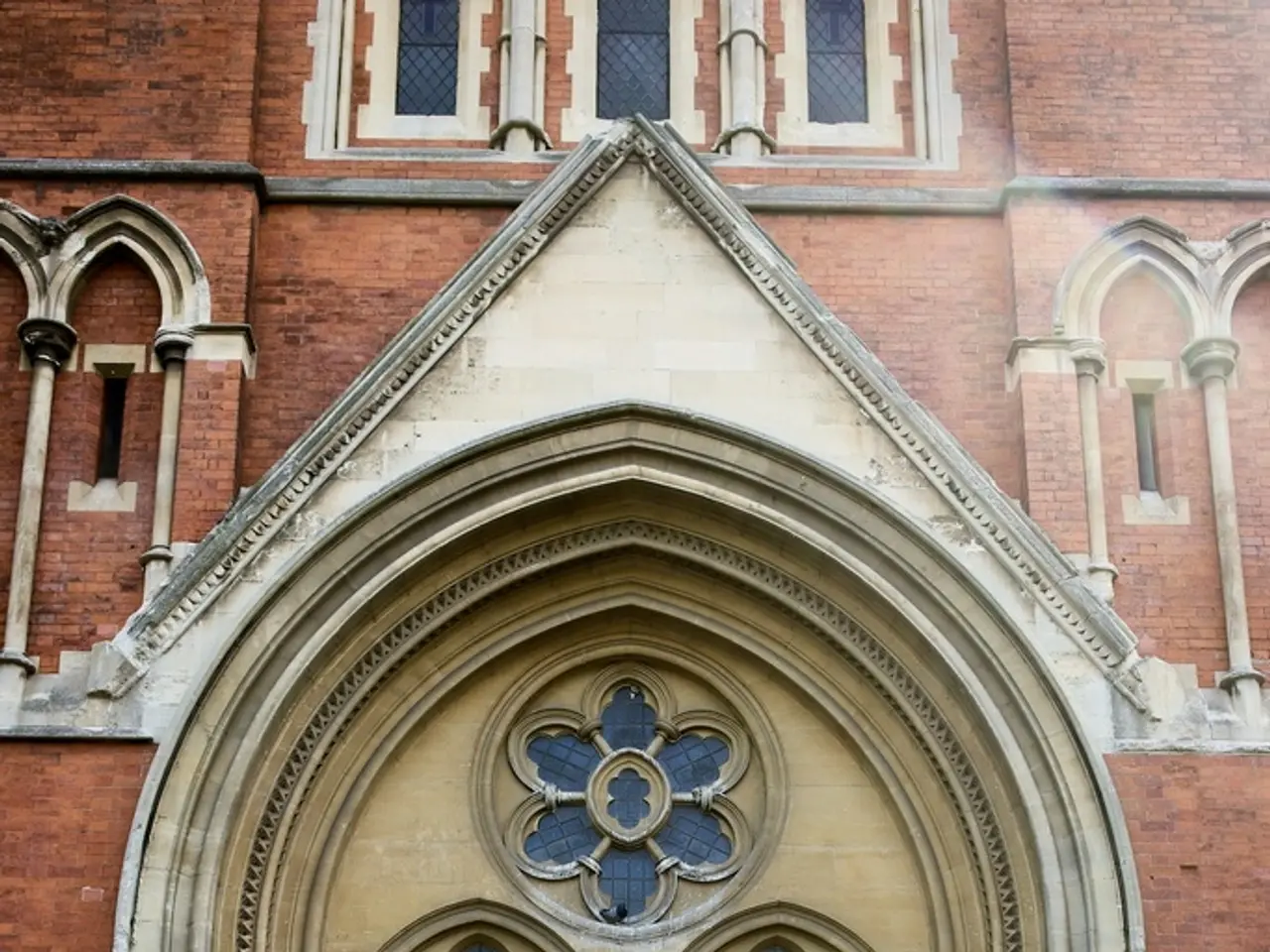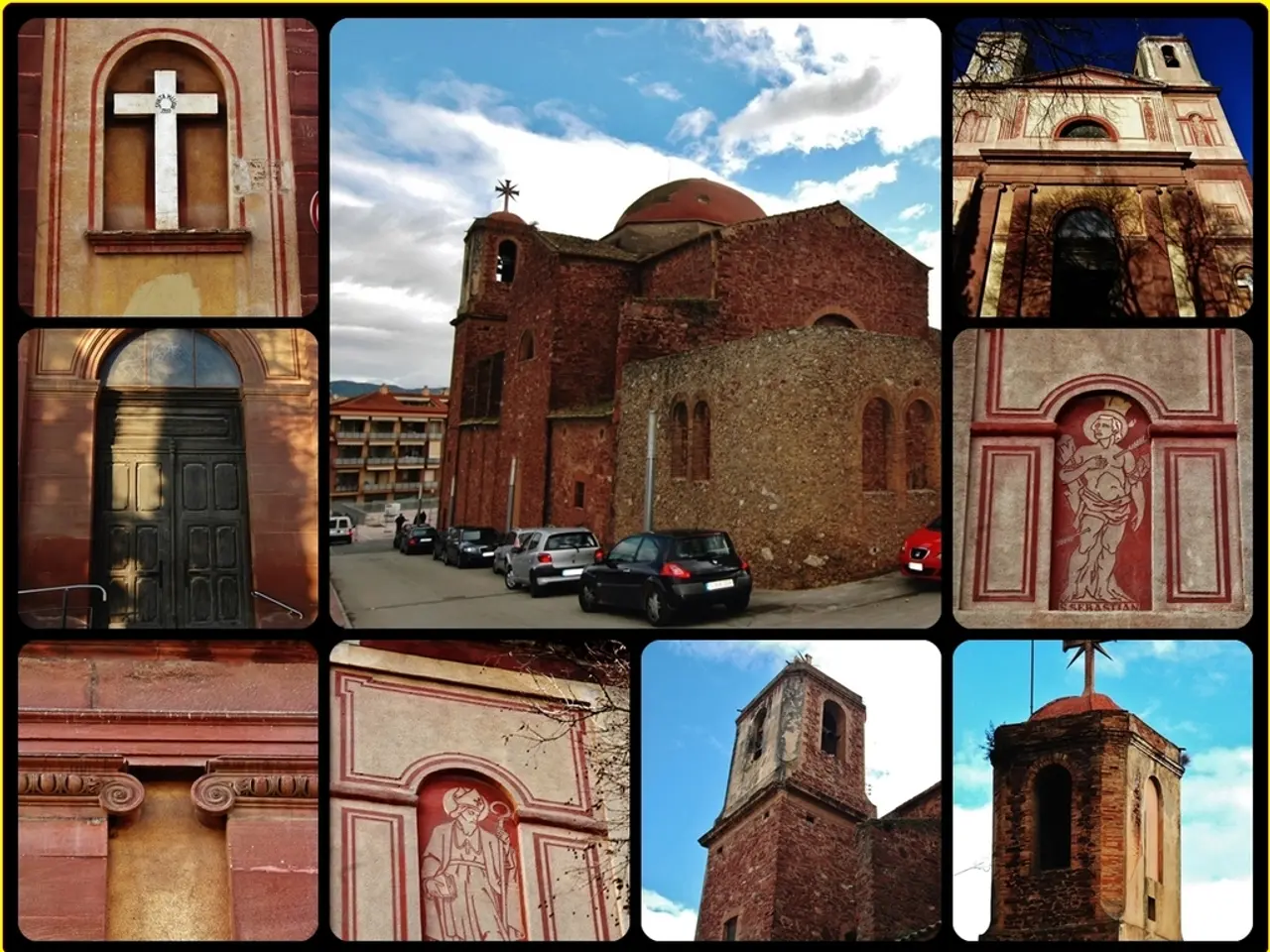Investigating the Era of the Reformation by Examining the Architecture of Churches
**Notre Dame Facilities Aid in Comprehension of Pre-Reformation Catholic Churches**
Last week, a group of A-level Historians visited the Chapel at Notre Dame for a guided tour focused on understanding the history and architecture of a Catholic church prior to the Reformation. The visit was part of their studies on the key features of a Catholic church and the Tudor Reformation.
The Chapel visit was led by Lay Chaplain, Anne Merry, who explained the various architectural elements typically seen in Catholic churches before the Reformation. These features include the basilica plan layout, rounded arches and vaults, massive piers and limited light, chevet and radiating chapels, defined liturgical spaces, towers, monastic and pilgrimage focus, and symbolic decoration.
The basilica plan, featuring a long nave, side aisles, transept, and apse, was a common design for early Catholic churches. The rounded arches and vaults, such as barrel and groin vaults, supported stone roofs instead of timber, while massive thick walls and piers were used to withstand vault thrusts. The relative scarcity of windows resulted in dimly lit interiors, creating an atmosphere of solemnity.
In France, the eastern end often featured an elaborated chevet, a complex of rounded apse with radiating chapels, allowing several altars for multiple priests and accommodating pilgrims visiting relics. The choir or chancel housed clergy and singers, set apart from the nave where the laity congregated. This separation was often marked by cancelli (rails).
Many large Romanesque churches grew from monastic traditions and pilgrimage needs, prompting the addition of ambulatories and galleries to facilitate movement of pilgrims around the sanctuary. Stylized stone carvings and iconography inside and outside were common forms of decoration, expressing religious symbolism.
One student commented that the visit provided an opportunity to learn about the history of the Chapel and its influences. They found the visit educational and interesting, noting that the facilities at Notre Dame are unique in their ability to aid students in their comprehension of historical subjects.
The facilities at Notre Dame are significant in providing a deeper understanding of various topics, including the Tudor Reformation. They are essential in supporting the A-level Historians' studies on the Tudor Reformation and its impact on churches. The visit was a significant part of their studies, as it fostered a connection between students and the history of the Chapel.
Notre Dame's facilities are advantageous in fostering a connection between students and their studies, regardless of their historical context. They are instrumental in deepening students' understanding of the Tudor Reformation and the key features of a Catholic church prior to the Reformation. The facilities at Notre Dame play a crucial role in enhancing students' connection to their studies, even historical topics, making them an invaluable resource for A-level Historians.
The student found the visit educational, noting that the facilities at Notre Dame are unique in their ability to aid students in their comprehension of not only historical subjects, but also aspects of education and self-development. The facilities at Notre Dame are essential in fostering a deeper understanding of various topics, including the Tudor Reformation and the key features of a Catholic church prior to the Reformation, thus playing a significant role in students' education and self-development.




